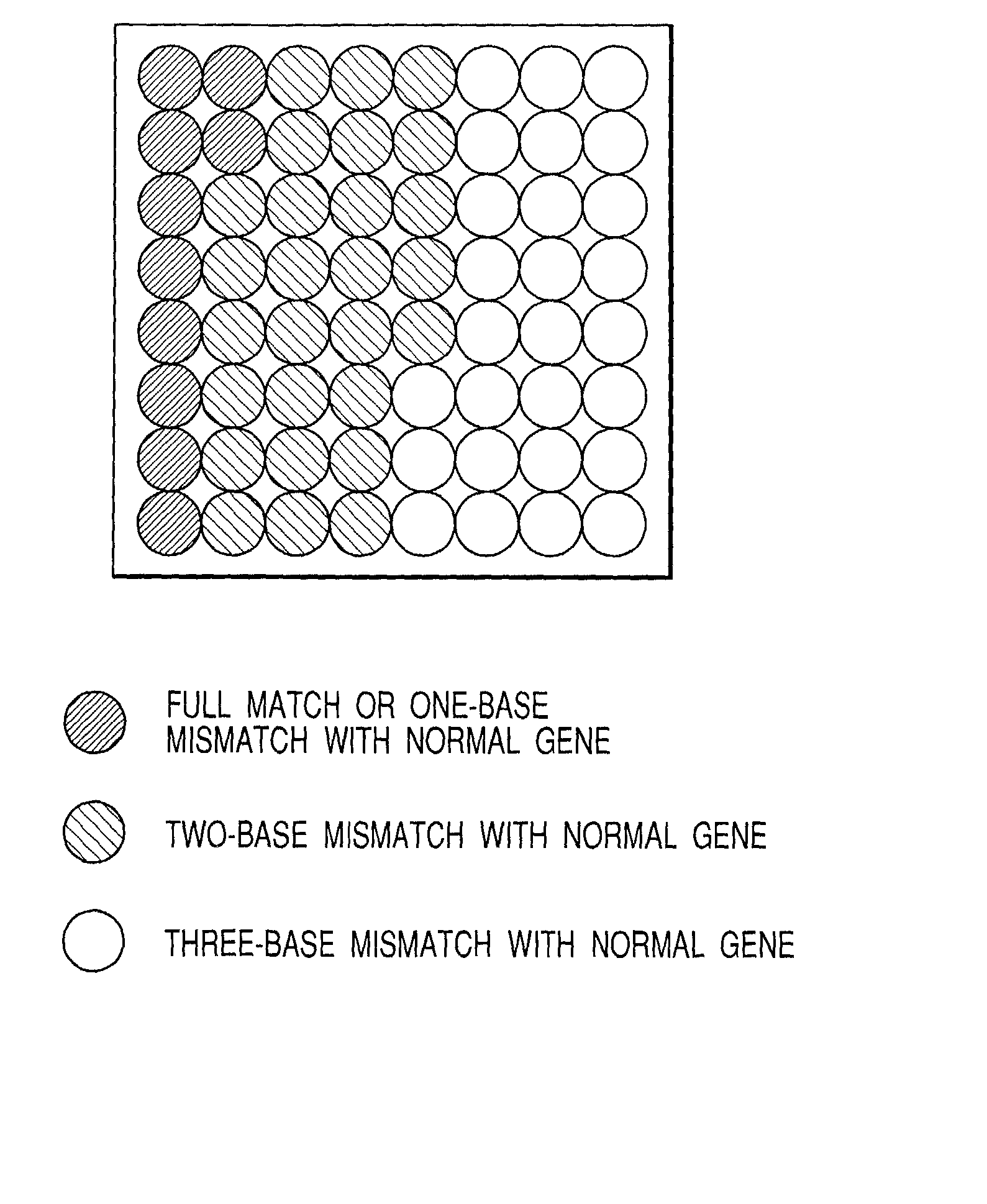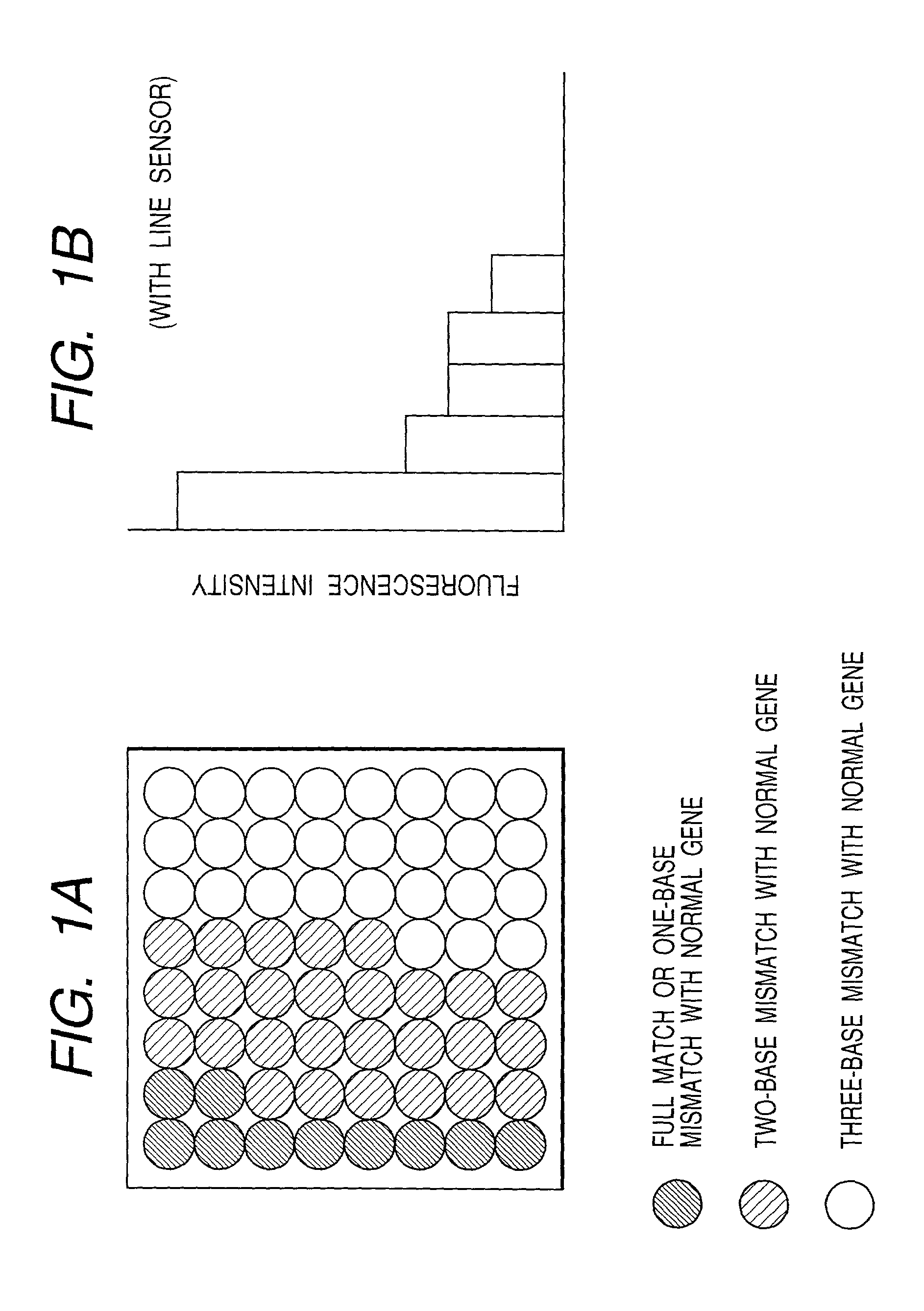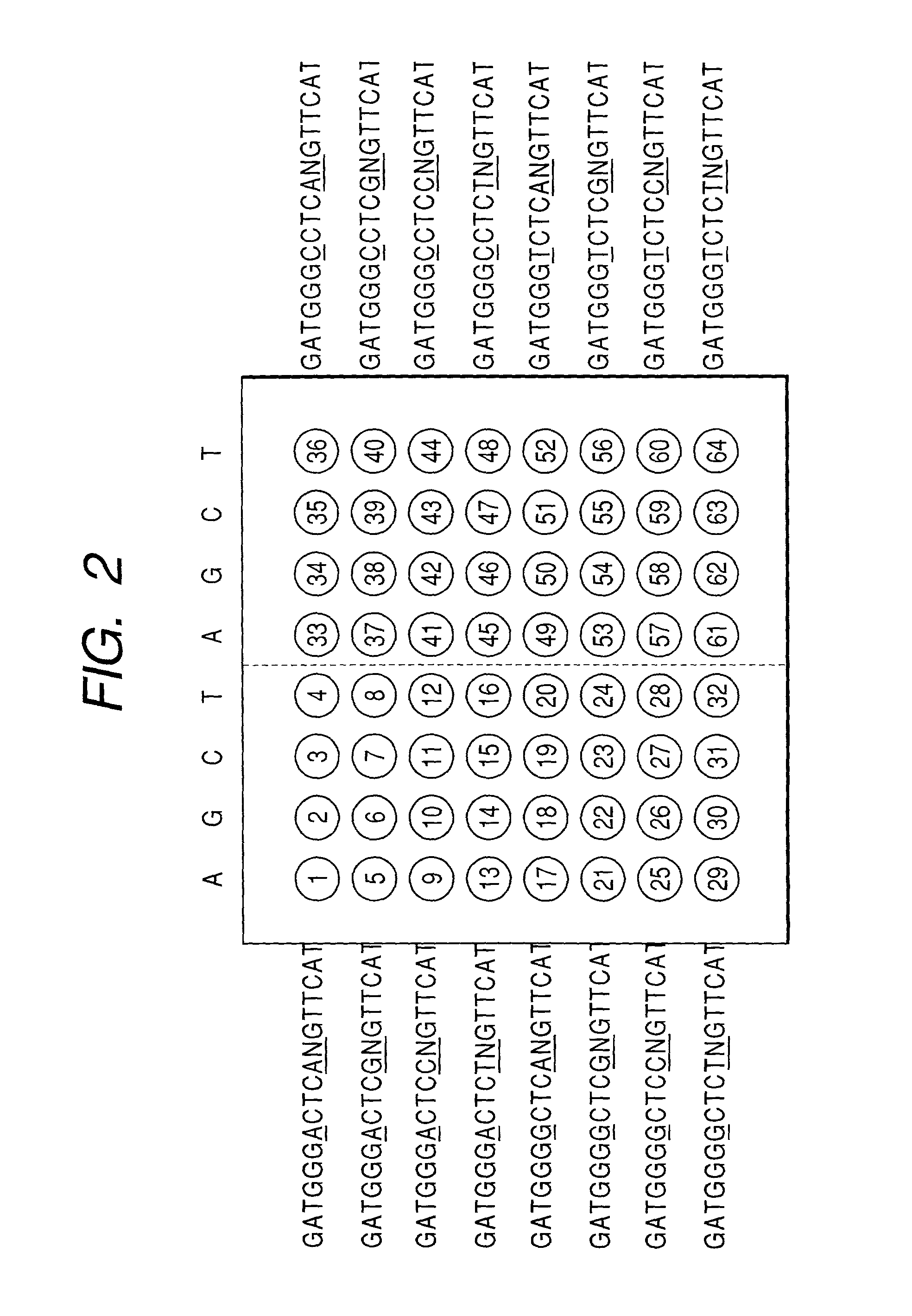Screening method for gene variation
a gene variation and screening method technology, applied in the field ofvariation detection methods, can solve the problems of large cost of precision apparatus and analysis, difficult to call the difficulty of determining whether a hybrid is present,
- Summary
- Abstract
- Description
- Claims
- Application Information
AI Technical Summary
Benefits of technology
Problems solved by technology
Method used
Image
Examples
example 1
[0066] Preparation of DNA Array for Detection of Variant Gene for Line Sensor
[0067] 1) Preparation of DNA Array Linked with 64 Types of Probes
[0068] (1) Probe Design
[0069] It is well known that in the base sequence CGGAGG corresponding to the AA248 and AA249 of the tumor suppressor gene p53, frequently observed variation is those the first C to T, the second A to G for AA248, and the third G to T for AA249. Accordingly, aiming at these three positions, 64 types of probes were designed.
[0070] That is, the designed nucleic acid are 18-mer nucleic acids harboring variegated above mentioned six bases sandwiched between the common sequences, represented by 5'ATGAACNNGAGNCCCATC3' where N corresponds to any of 4 bases, A, G, C and T. Actual probes to detect the above sequence should be have a complementary sequence of 5'GATGGGNCTCNNGTTCAT3'.
[0071] FIG. 2 shows an arrangement of 64 types of DNA probes on a substrate. A sequence 5' ATGAACCGGAGGCCCATC3' corresponding to the normal gene is exp...
example 2
[0099] Preparation of DNA Array for Detection of Variant Gene for Line Sensor
[0100] (1) Preparation of DNA Array for Detection of Variation
[0101] In Tables 2 and 3, these 64 probes are grouped in every 8 probes in order of intensity based on the above described results. The fluorescence intensity of the first group should be extremely strong, and the total fluorescence quantity of the sixth, seventh and eighth groups should be zero.
2 TABLE 2 Group SEQ ID No. NO: Type of Mismatch 1 42 Full mismatch 58 One-base mismatch 34 One-base mismatch 41 One-base mismatch 46 One-base mismatch 10 One-base mismatch 44 One-base mismatch 43 One-base mismatch 2 26 One-base mismatch 38 One-base mismatch 50 Two-base mismatch 2 Two-base mismatch 6 Two-base mismatch 9 Two-base mismatch 11 Two-base mismatch 12 Two-base mismatch 3 14 Two-base mismatch 18 Two-base mismatch 22 Two-base mismatch 25 Two-base mismatch 27 Two-base mismatch 28 Two-base mismatch 30 Two-base mismatch 33 Two-base mismatch 4 35 Two-b...
example 3
[0107] Detection of Variant Gene Using DNA Array (1)
[0108] 1. Synthesis of Model Variant DNA
[0109] The labeled DNA No. 66 having the same length as the probes and a sequence complementary to No. 46 probe that differs by one base from the normal sequence of p53 gene was prepared. The sequence is shown below. Rhodamine was bound to the 5'-terminal. The underlined part is the variant position.
[0110] No. 66: 5'-Rho-ATGAACCAGAGGCCCATC-3' (SEQ ID NO:66)
[0111] Reaction Conditions for Hybridization
[0112] The hybridization reaction was carried out under the same conditions as in Example 1. The concentration of the model sample DNA was 50 nM.
[0113] Detection by Line Sensor
[0114] After the hybridization reaction, the DNA array was evaluated in the same manner as in Example 2 using a line sensor. As shown in FIG. 6, the fluorescence was observed in the sixth, seventh and eighth groups where the fluorescence was not observed with the normal gene. Thus, it was easily judged that the sample gene w...
PUM
| Property | Measurement | Unit |
|---|---|---|
| diameter | aaaaa | aaaaa |
| concentration | aaaaa | aaaaa |
| pH | aaaaa | aaaaa |
Abstract
Description
Claims
Application Information
 Login to View More
Login to View More - R&D
- Intellectual Property
- Life Sciences
- Materials
- Tech Scout
- Unparalleled Data Quality
- Higher Quality Content
- 60% Fewer Hallucinations
Browse by: Latest US Patents, China's latest patents, Technical Efficacy Thesaurus, Application Domain, Technology Topic, Popular Technical Reports.
© 2025 PatSnap. All rights reserved.Legal|Privacy policy|Modern Slavery Act Transparency Statement|Sitemap|About US| Contact US: help@patsnap.com



